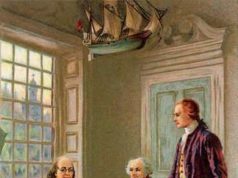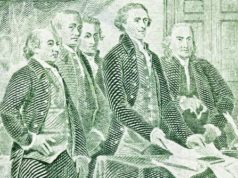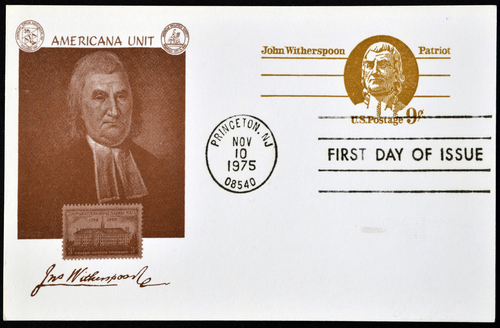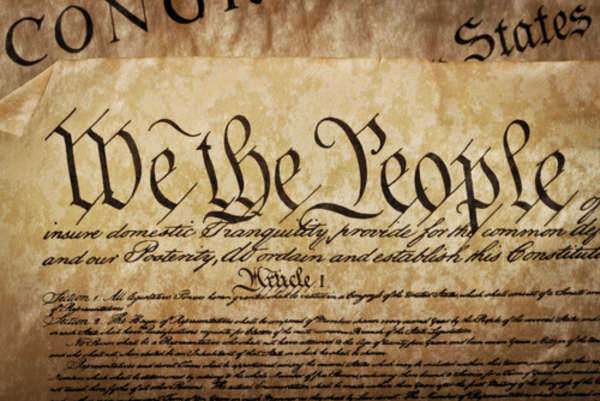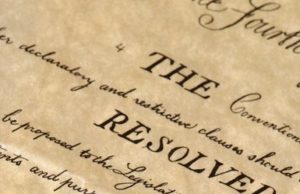Table of Contents
- 1 The Evolution of American Foreign Policy: A Comprehensive Analysis of Neutrality Acts
- 1.1 The Neutrality Acts: A Guide to Understanding U.S. Foreign Policy in the Early 20th Century
- 1.1.1 Introduction
- 1.1.2 Conclusion:
- 1.1.3 NEUTRALITY ACTS TEXT
- 1.1.4 What are the Neutrality Acts of the 1930s?
- 1.1.5 Background of the Neutrality Acts:
- 1.1.6 The Neutrality Act of 1935:
- 1.1.7 The Neutrality Act of 1936:
- 1.1.8 The Neutrality Act of 1937:
- 1.1.9 Neutrality Act of 1939:
- 1.1.10 The End of the Neutrality Acts:
- 1.1 The Neutrality Acts: A Guide to Understanding U.S. Foreign Policy in the Early 20th Century

The Evolution of American Foreign Policy: A Comprehensive Analysis of Neutrality Acts
Introduction
In the turbulent years leading up to World War II, the United States faced a daunting challenge: how to navigate the treacherous waters of international conflict without getting entangled in foreign wars. The answer to this conundrum lay in a series of legislative acts known as the “Neutrality Acts.” These laws, enacted in the 1930s, aimed to keep the United States out of foreign conflicts while safeguarding its interests and national security. This article provides an in-depth analysis of the Neutrality Acts, their historical context, impact, and the legacy they left in shaping American foreign policy.
I. The Prelude to the Neutrality Acts
The global stage in the 1930s was fraught with tension. The aftermath of World War I had left Europe in shambles, and fascist regimes in Germany and Italy were asserting their dominance. Meanwhile, Japan had embarked on an expansionist campaign in Asia, raising concerns about its ambitions. In this turbulent era, the United States faced a difficult choice: whether to involve itself in the escalating conflicts or maintain a policy of non-intervention.
A. Neutrality Legislation in World War I
Before delving into the Neutrality Acts of the 1930s, it’s essential to understand the context provided by the United States’ experience during World War I. During this conflict, the U.S. maintained a policy of neutrality until 1917 when it entered the war on the side of the Allies. The lessons learned from this experience would shape the subsequent neutrality legislation.
B. The 1930s: Rising Global Tensions
By the 1930s, international tensions were on the rise. Adolf Hitler’s Nazi regime in Germany was aggressively expanding its territory, flouting the Treaty of Versailles. In 1931, Japan invaded Manchuria, and Italy, under Benito Mussolini, invaded Ethiopia in 1935. These actions caused alarm in the United States and raised questions about the nation’s role in maintaining peace and stability.
II. The Neutrality Acts: A Series of Measures
In response to the escalating conflicts abroad, the U.S. Congress passed a series of Neutrality Acts during the 1930s. These acts were designed to prevent the United States from being drawn into foreign wars and were influenced by the memory of World War I.
A. The Neutrality Act of 1935
The first of the Neutrality Acts, passed in 1935, imposed an embargo on selling arms to belligerent nations. This was a direct response to the outbreak of the Italian-Ethiopian War. The act also included a provision known as the “cash-and-carry” policy, which allowed warring nations to purchase non-military goods from the United States as long as they paid in cash and transported the goods on their own ships.
B. The Neutrality Act of 1936
The Neutrality Act of 1936 expanded on the previous legislation. It extended the arms embargo to include civil wars, and it added the provision that American citizens traveling on belligerent ships did so at their own risk. This was a reaction to the Spanish Civil War and the increasing involvement of foreign powers.
C. The Neutrality Act of 1937
The Neutrality Act of 1937 further restricted American involvement in international conflicts. It mandated an embargo on all arms and munitions to belligerents, including non-intervention in the ongoing conflict between China and Japan. Additionally, it required warring nations to pay cash for any non-military goods they purchased from the United States.
D. The Neutrality Act of 1939
The Neutrality Act of 1939 marked a significant departure from the previous acts. It allowed the sale of arms to belligerent nations but only on a cash-and-carry basis. Furthermore, it permitted the President to declare “limited national emergencies” and provide aid to nations deemed vital to U.S. security, effectively giving the executive branch more flexibility in foreign policy.
III. The Impact of the Neutrality Acts
The Neutrality Acts had a profound impact on American foreign policy and international relations during the 1930s. Their effects can be examined from various angles.
A. Maintaining Neutrality
The primary objective of the Neutrality Acts was to keep the United States out of foreign conflicts. By imposing arms embargoes and restricting trade with belligerent nations, these laws aimed to ensure that the United States remained neutral in word and deed.
B. Economic Consequences
The cash-and-carry provision of the Neutrality Acts had significant economic implications. It allowed the United States to engage in trade with belligerent nations as long as they paid cash and transported the goods themselves. This not only protected American interests but also bolstered the U.S. economy during the Great Depression.
C. Controversial Aspects
While the Neutrality Acts were intended to keep the United States out of war, they were not without controversy. Critics argued that these laws undermined the ability of the United States to support democratic nations facing aggression. They believed that the embargo on arms sales to countries like Britain and France hindered their ability to resist Nazi expansion.
IV. The Road to Repeal
As global events continued to unfold, it became clear that the Neutrality Acts needed revision. The outbreak of World War II in Europe in 1939, followed by the fall of France in 1940, underscored the need for a more flexible approach to foreign policy.
A. The Repeal of the Arms Embargo
In November 1939, President Franklin D. Roosevelt requested that Congress repeal the arms embargo provisions of the Neutrality Act of 1939. Roosevelt argued that the United States needed to support countries like Britain and France, which were fighting against Nazi Germany. Congress agreed, and the arms embargo was lifted.
B. The Lend-Lease Act
In March 1941, the United States took another step towards direct involvement in the war with the passage of the Lend-Lease Act. This legislation allowed the U.S. to lend or lease military equipment to countries deemed vital to U.S. security. It marked a significant shift away from strict neutrality and towards active support of the Allied powers.
V. Legacy and Conclusion
The Neutrality Acts of the 1930s represented a complex chapter in American foreign policy. While they were initially designed to keep the United States out of foreign conflicts, they also reflected the nation’s struggle to balance isolationism with international responsibility.
In the end, the Neutrality Acts were a response to a unique historical context, and their legacy is one of evolving foreign policy. They demonstrated that in a rapidly changing world, rigid adherence to neutrality might not always be in the best interest of a nation. The repeal of these acts and the passage of the Lend-Lease Act marked a pivotal moment in American history, as the United States transitioned from a spectator to a participant in World War II.
The Neutrality Acts, with their cautious approach to international involvement, have left a lasting impression on American foreign policy. They serve as a reminder of the challenges faced by a nation when trying to navigate the complex waters of global conflict while preserving its own interests and values. As we continue to grapple with issues of international diplomacy and military intervention, the lessons of the Neutrality Acts remain
relevant, providing valuable insights into the delicate balance between non-intervention and global responsibility.
The Neutrality Acts: A Guide to Understanding U.S. Foreign Policy in the Early 20th Century
Introduction
The neutrality-acts were a series of laws passed by the U.S. Congress in the 1930s and early 1940s that aimed to keep the country out of foreign conflicts. These laws were based on the belief that the U.S. had been drawn into World War I against its will, and that steps needed to be taken to prevent a similar situation from happening again.
Section 1: The First Neutrality Act of 1935
The first of the neutrality-acts was the Neutrality Act of 1935, which was passed by Congress in response to the growing threat of war in Europe. This law prohibited the export of arms, ammunition, and other military supplies to belligerent nations, as well as the transportation of U.S. citizens on belligerent ships.
Section 2: The Second Neutrality Act of 1936
The Second Neutrality Act of 1936 was passed to strengthen and expand the provisions of the 1935 law. This law extended the arms embargo to include civil wars and allowed for the sale of non-military goods to belligerent nations on a “cash and carry” basis. This meant that any nation wanting to purchase American goods had to pay cash and transport them on their own ships.
Section 3: The Third Neutrality Act of 1937
The Third Neutrality Act of 1937 further expanded the provisions of the 1935 law. It prohibited U.S. citizens from traveling on belligerent ships, even on a “cash and carry” basis. It also imposed an embargo on all loans and credits to belligerent nations.
Section 4: The lend-lease act of 1941
In 1941, with the threat of war looming ever larger, Congress passed the Lend-Lease Act. This law allowed the President to lend or lease military equipment to any country he deemed essential to U.S. defense efforts. This act marks the end of the neutrality-acts and the shift towards U.S. involvement in World War II.
Section 5: The legacy of the neutrality-acts
The neutrality-acts were controversial at the time of their passing and remain a topic of debate today. Supporters argue that the laws helped keep the U.S. out of World War II until it was absolutely necessary to get involved, while critics argue that they were too isolationist and prevented the U.S. from taking a more active role in preventing the spread of fascism in Europe.
Conclusion:
The neutrality-acts were a series of laws that sought to keep the U.S. out of foreign conflicts in the early 20th century. While they were controversial at the time, they remain an important part of U.S. foreign policy history and continue to shape the way that policy makers approach issues of war and peace.
NEUTRALITY ACTS TEXT
What are the Neutrality Acts of the 1930s?
The Neutrality Acts of the 1930s were a series of laws passed by Congress to subside the growing turmoil in Asia and Europe—feuds that eventually led to World War II. The Neutrality Acts ultimately spawned out of America’s willingness to practice non-interventionism and isolationism. This passive view on foreign policy stemmed from the United States’ involvement in World War I—The Neutrality Acts were passed to ensure that the United States would not entangle itself in foreign conflicts.
The Neutrality Acts, as the name suggests, was a series of laws that affirmed the United States’ inclination to sit on the sidelines during times of war. Ultimately, the legacy of the Neutrality acts proved somewhat futile, because they failed to make a distinction between victims and aggressors during times of conflict. The United States, through the Neutrality Act, treated all countries engaged in violence as “belligerents” or aggressors and thus deemed all clashes as unworthy for intervention. The failure to elaborate on international conflicts and label opposing sides as either “friendly” or “aggressive” initially limited the United States’ ability to aid Great Britain and other European allies against Nazi Germany. The Neutrality Acts were repealed in 1941, in the face of Pearl Harbor and the German submarine attack on U.S. naval ships.
Background of the Neutrality Acts:
The Neutrality Acts of the 1930s were spurred from the United States’ entry into World War I—an entry that many Americans believed was orchestrated by American arms dealers and bankers for the purpose of increasing profits. This sentiment eventually gained enough momentum to influence America’s stance on isolationism.
Prominent members in the United States Congress pushed for strong Neutrality Acts, which were the basis for Republican foreign policy. That being said, the support of non-interventionism was not limited to the right.
Democratic President, Franklin Roosevelt and his Secretary of State, Cordell Hull, were skeptical of the Neutrality Acts because they feared the legislation would restrict the United States from supporting its allies in times of crisis.
Even with a largely democratic House and Senate, ample support was realized to pass the Neutrality Acts. In response to the passing, President Roosevelt declined to veto the Neutrality Act—he had no interest in angering the public in the light of the upcoming Presidential election of 1936. When signed into law, the Neutrality Acts were perpetually revised and agglomerated with provisions—in total, the Neutrality Act is a grouping of 4 separate Neutrality Acts. Below is a description of each Neutrality Act:
The Neutrality Act of 1935:
President Franklin Roosevelt’s State Department lobbied for a series of embargo provisions that would enable the President to impose sanctions on the Neutrality Acts. This request was rejected by Congress.
The Neutrality Acts of 1935 was officially signed into law in August of 1935 to impose a general embargo on arms trading and the delivery of war materials between all parties in a conflict or war. Furthermore, the Neutrality Acts of 1935 declared that citizens of the United States who were to travel on warning shops did so at their own risk—the government would not partake in any retribution for attacks or causalities on said vessels.
The Neutrality Acts of 1935 also declared a “moral embargo” on any belligerent nation (again this proved ambiguous) who actively covered trades under the provisions of the Neutrality Act.
The Neutrality Act of 1936:
Passed in February of 1936, The Neutrality Act of 1936 effectively renewed the provisions of the Neutrality Act of 1935 for a 14-month period. Additionally, the Neutrality Act of 1936 forbade any forms of financing, including all loans of forms of credit supplied to belligerent nations. The Neutrality Act of 1936; however, made no mention of civil conflicts, such as those in Spain during the late 1930s. In response, a number of American companies (such as Standard Oil, General Motors, Ford, and Texaco) used the loophole of the Neutrality Act of 1936 to sell various items to Don Francisco Franco (the Head of State of Spain) on credit. By the latter portion of 1939, Franco owed these American companies over 100 million dollars.
The Neutrality Act of 1937:
In January of 1937, the United States Congress passed a joint resolution that outlawed the sale of all arms with Spain. The Neutrality Act of 1937, which was passed in May, included several provisions of its predecessors, only without expiration dates attached. Furthermore, the Neutrality Act of 1937 included isolation practices for all international civil wars.
The Neutrality Act of 1937 also prohibited U.S. ships from transporting any passenger or military article to belligerent nations. U.S. citizens were forbidden from traveling, via waterways, to belligerent nations.
The Neutrality Act of 1937 included a “cash and carry” provision which was formally devised by Roosevelt’s top advisor, Bernard Baruch. The cash and carry provision stated that the President may authorize the sale of supplies and materials to belligerent nations in Europe, so long as the recipient arranged for the transport of said goods and provided payment immediately in cash. This provision was included in the Neutrality Act of 1937 because it was believed that due to the immediacy of liquid payment, the United States would not be drawn into the conflict. Roosevelt viewed the provision as a means to aid Great Britain and France in the event of a war with Nazi Germany. France and Britain were the benefactors of the provision because of their geographic location and naval powers—they were the only two nations that controlled the seas and were thus able to take advantage of such transactions.
The Neutrality act of 1937 was put to the test when Japan invaded China in July of 1937 (the start of the Sino-Japanese War). Roosevelt, who supported China, chose not to invoke the provisions of the Neutrality Acts since the parties never declared a formal war. By refraining, Roosevelt ensured that China’s efforts to defend itself would not be impeded by the Neutrality act. China relied on arms imports and only Japan could take advantage of the cash and carry provision. This maneuver outraged isolationists in the government who believed that the Neutrality Acts were being undermined. In turn, Roosevelt exclaimed that American ships were prohibited from transporting arms to belligerents, but British ships were able to transport American arms to China. This flow of arms marked the beginning of the “quarantine phase” where America shifted from neutrality towards a foreign policy that was set on eliminating all aggressors.
Neutrality Act of 1939:
At the beginning of 1939 (following the Nazi takeover of Czechoslovakia), Roosevelt lobbied Congress to renew the cash and carry provision. Roosevelt was ultimately rejected, as the provision lapsed and the mandatory arms embargo remained active.
After Germany had invaded Poland in September of the same year, France and Great Britain declared war on the Nazi regime. In response, Roosevelt invoked the provisions of the Neutrality Acts but stated that the acts may provide passive aid to aggressive nations. Roosevelt eventually prevailed over isolationism supporters and in November the Neutrality Act of 1939 was passed, which allowed arms trade with belligerent nations (only on a cash and carry basis) to be enacted. This ended the arms embargo and repealed the Neutrality Acts of 1935 and 1937.
American ships and citizens were outlawed from entering war zones (specifically designated by Roosevelt) and the National Munitions Control Board was responsible for issuing licenses for all arms transactions as specified under the Neutrality Act of 1939. Any arms transaction that was fortified without a license carried a penalty of up to two years in federal prison.
The End of the Neutrality Acts:
The passing of the Lend-Lease Act, in March of 1941, marked the dissolution of Neutrality police. America, through the Lend-Lease Act, was able to lend, sell, or give war supplies to allied nations.
Following German attacks on U.S. vessels, Roosevelt announced on September 11th of 1941, that he ordered the U.S. Navy to attack Italian and German war vessels overseas. The United States formally declared war on Japan following the attack on Pearl Harbor and later declared war on Italy and Germany 3 days later, on December 11 of 1941.

